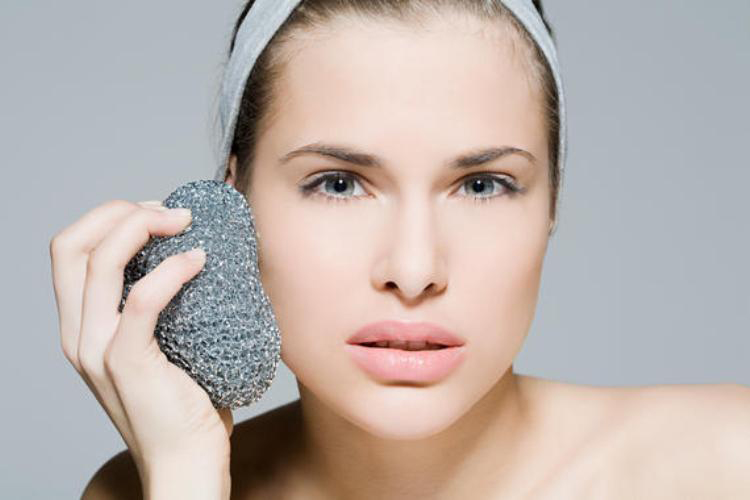Your cart is currently empty!

Exfoliation Benefits:
An exfoliant is any agent that removes dead skin cells from the surface Stratum Corneum to reveal the newer smoother skin underneath. The benefits of exfoliation are fairly obvious:
• Removes dull, dry skin
•Smoother, softer skin
•Reduces lines, pigmentation, hyperkeratoris
•Stimulates cell renewal & turnover rates
•Facilitates hydration and absorption of ingredients
How do Hydroxy Acids & Exfoliation work?
While pH and concentration are both important factors to consider we do know that when the concentration of AHA is less than 3% it only penetrates a few layers of the SC. In order to penetrate to about 20 layers deep you need to use concentrations above 10%. A low pH is responsible for much of the action attributed to AHAs. It is not recommended to ever use a pH lower than 3.0 in professional treatments (and 3.5pH for retail) as anything lower causes cell clumping.
AHAs improve skin thickness, firmness, wrinkles, stimulate and cell renewal and cell turnover time. Prolonged use of AHAs on skin show after 20wks of use that both glycolic and lactic acid are less effective at increasing cell renewal and the number of shed cells. But skin firmness, thickness and improvement to wrinkles continues beyond 26 weeks. Therefore, the mechanism of action cannot be solely attributed to stimulating cell renewal. Scientists are studying different mechanisms of action to better understand them.
Cell cohesions and pH changes account for the initial bust of shedding of SC cells when AHAs are used. It has been suggested that AHAs act as chelating agents, decreasing the local calcium ion concentrations from cation dependent cell adhesion proteins; this may account for a weakening of the desmosome and allow for cell sloughing.
The low pH may also disrupt the required pH environment for the enzymes involved in cell sloughing differentiation and proliferation.
Collagen
Collagen and elastin proteins are the primary fibrious proteins that comprise the dermis. Collagen, one of the strongest natural proteins gives skin durability and resiliency; it accounts for approximately 75% of the skin’s dry weight and provides both tensile strength and elasticity. There are over 20 different types of collagen, of which 11 are found in the dermis. In adults collagen type I, III and V account for the greatest proportion of the collagen. Type I makes up 80-90% while Type III is 8-12%. Type V collagen is interspersed into fibrils with both type I and III collagen.
Elastin
Elastin fibers of the dermis provide recoil properties to the dermis and surround and surround the collagenbundles. There is both a fibrous and matrix component to elastin. A sugar-protein forms a template on which the elastin protein is deposited. Elastin fibers closest to the epidermis are considered to be the immature fibers and those in the deepest part of the dermis are considered to be the mature fibers. Unfortunately, exposure to sunlight, inflammation and aging all degrade elastin resulting in a condition known as skin elastois, a hallmark of photoaged skin. Under the microscope elastosis of an accumulation of abnormal elastic fibers; to the visible eye it is characterized by slack skin with wrinkles.
The benefit of exfoliation for Acne skin:
We know that there is an overproduction of sebum and dead cells that binds together in the follicle causing a blockage. This is retained further because in acne skin, there is less of the enzyme cholesterol sulfatase due to fewer lamellar granules. It is the lamellar granules that stimulate the enzyme to dissolve the NMF, allowing the cells to detach. Creating a condition known as granules, dissolve the NMF and allow the cells to detach therefore clearing the congestion in the follicle. They will also dissolve the desmosome protein linkages causing a burst in skin exfoliation.
The benefit of exfoliation for Dehydration skin:
Lack of moisture in the Stratum Corneum leads to gaps in the cellular barrier. Moisture evaporates from below, which then leads to a dehydrated skin. Clients attempt to overcome this by over-moisturizing which is literally sticking the old cells down and this leads to a dull, uneven skin texture. Hydroxy Acids will take off the old cells and stimulate new cells full of moisture to be brought to the surface.
The benefit of exfoliation for Aging skin:
Cell production slows down as we age. So as the journey from the Stratum Germinativum to the Stratum Corneum takes longer, it means the cells are retained on the surface for a longer period of time getting drier and duller. Epidermal renewal varies from 12-19 days (teens) to 28-35 days (mid-life) and up to 90 days in maturity.
The benefit of exfoliation for Acne skin:
Hydroxy Acids will shed the pigmented cells more quickly, so they are great combined with ingredients that suppress the melanin production such as Bearberry, Mulberry Extract, Kiwi, Phytic Acid and Licorice. Lactic acid at a 5% is also a tyrosinase inhibitor.